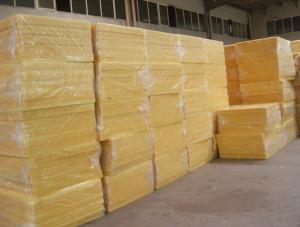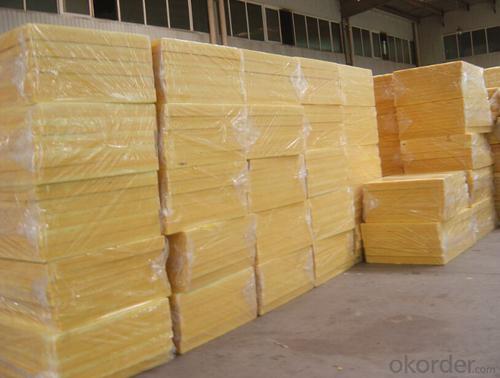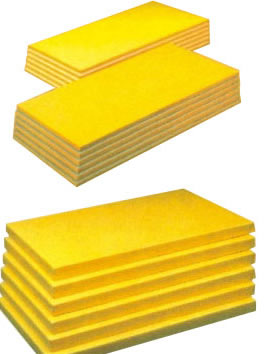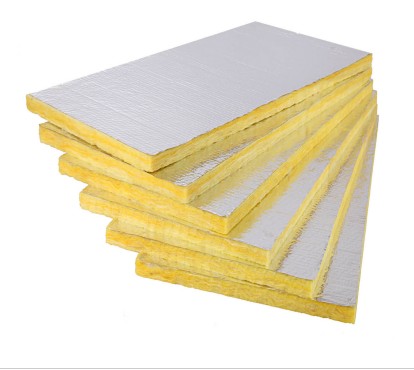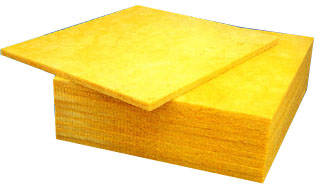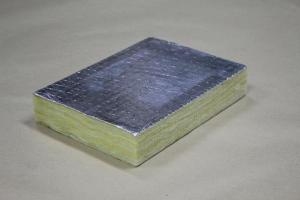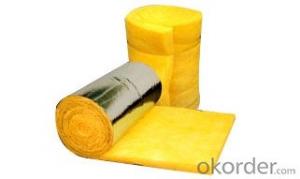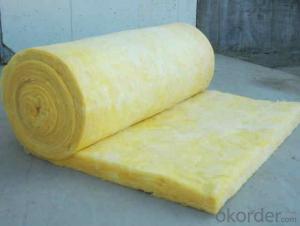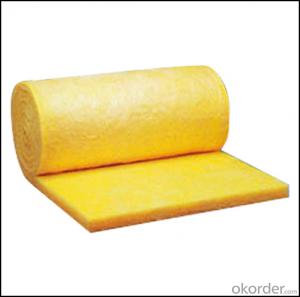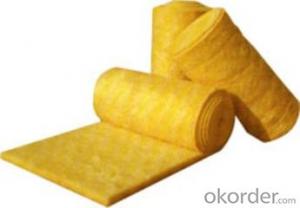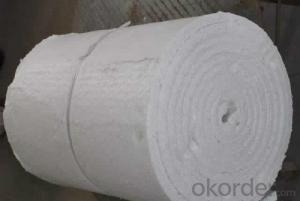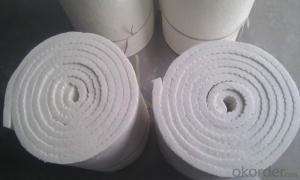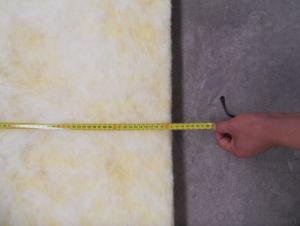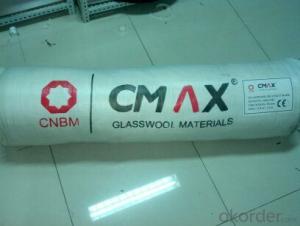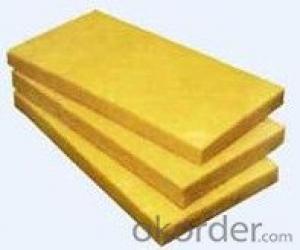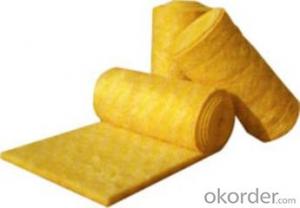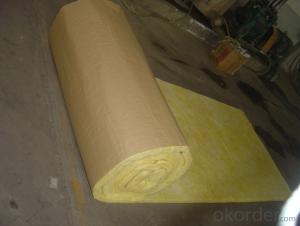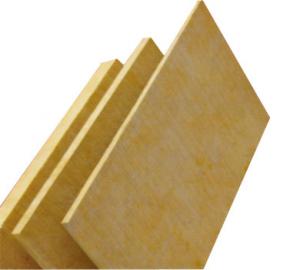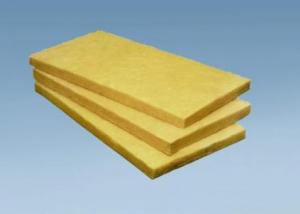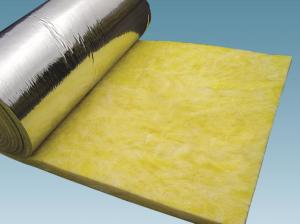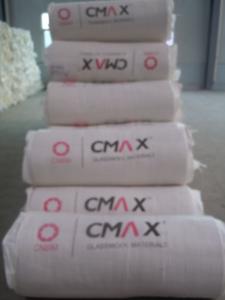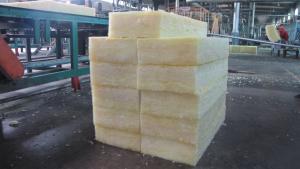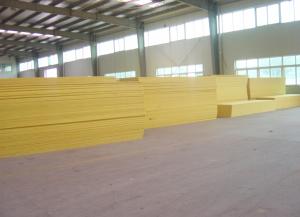Glass Wool for Thermal Insulation Roofing - High Quality at Affordable Prices
- Loading Port:
- China Main Port
- Payment Terms:
- TT or LC
- Min Order Qty:
- 1000 roll
- Supply Capability:
- 1000000000000 roll/month
OKorder Service Pledge
OKorder Financial Service
You Might Also Like
Glass wool blanket for thermal Insulation
1.Structure of Glass wool blanket for thermal Insulation:
Glass wool is an industrial product made by spinning glass into a fibrous material that can be packed in mats and blankets. This product is used as insulation and in other applications, like for air filters. The glass wool blanket is applied for largelaying area. Besides the character of thermal insurance, it also has theperformances of shock absorption and acoustical isolation, especially for middleor low frequency sound. It also can cancel the noise and improve workingenvironment.The glass wool blanket with aluminum foilsurface has good capability of heat radiation protection.
2.Main Features of Glass wool blanket for thermal Insulation:
The glass wool blanket is applied for large laying area. In the field of insulation materials, we are mainly specializing in Glass wool products, including blankets, boards and pipes.
3. Glass wool blanket for thermal Insulation Images
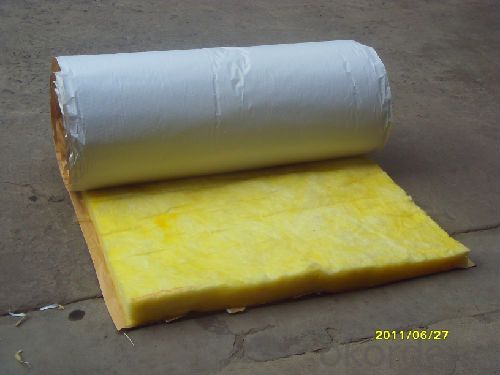
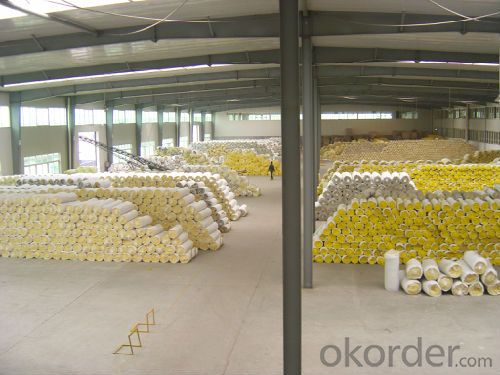
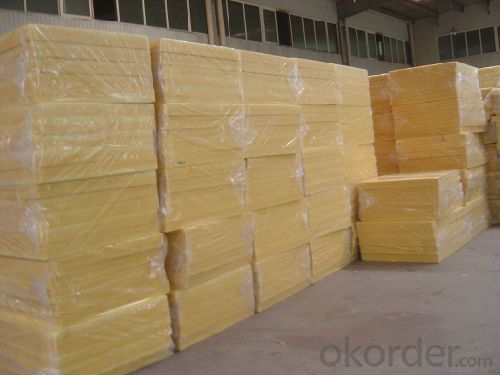
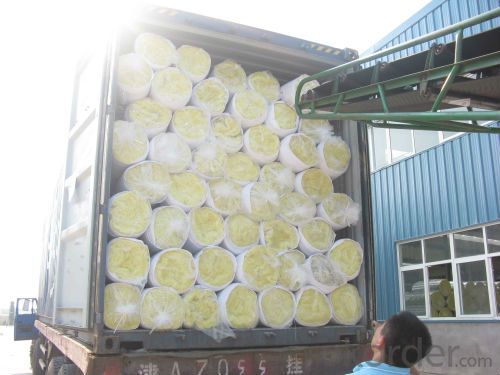
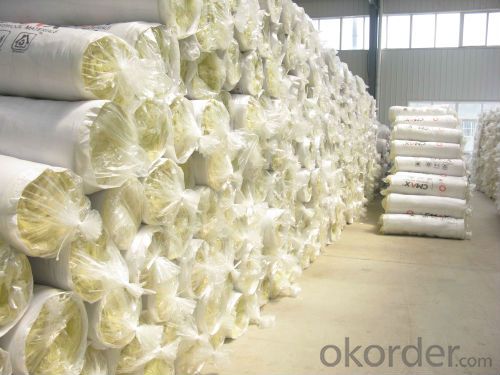
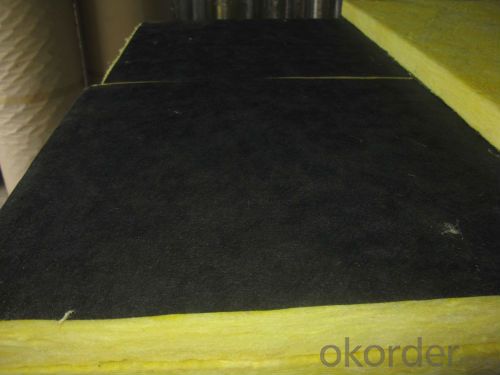
4. Glass wool blanket for thermal Insulation Specification
The glass wool blanket is applied for large laying area. Besides the character of thermal insurance, it also has the performances of shock absorption and acoustical isolation, especially for middle or low frequency sound. It also can cancel the noise and improve working environment.
Technical Data
Item | Unit | Index |
Density | Kg/m3 | 10-32 |
Thickness | mm | 25-150 |
Width | mm | 600-1200 |
Length | mm | 10000-30000 |
Both unfaced and faced felts can be provided.
5.FAQ
We have organized several common questions for our clients,may help you sincerely:
① How about package?
Normal packing: Each roll is wrapped withvacuum plastic bag, and then in PE woven bag.
Special required package like PE BAG and PESHRINKED BAG can be made with additional charge.
②How to guarantee the quality of the products?
We have established the international advanced quality management system,every link from raw material to final product we have strict quality test;We resolutely put an end to unqualified products flowing into the market. At the same time, we will provide necessary follow-up service assurance.
③How long can we receive the product after purchase?
In the purchase of product within three working days, We will arrange the factory delivery as soon as possible. The pecific time of receiving is related to the state and position of customers.Commonly 7 to 10 working days can be served.
- Q: Is the glass wool used in curtain wall the thermal insulation wool?
- The glass wool used for curtain wall is thermal insulation wool.However, due to the need of fireproofing, the thermal insulation material for curtain wall normally is rock wool.
- Q: What is the difference between quartz wool and glass wool?
- Hello! I'm glad to answer your question! Glass wool is made by natural minerals such as quartz, dolomite, feldspar, limestone coupled with soda ash, borax and other auxiliary materials ... Glass wool is a fine fibrous material through drawing, blowing or swing of external force in melting state. Glass wool is an inorganic fiber. It has the following basic characteristics: ① It has good thermal insulation property at high and low temperatures. ② It is noncombustible without producing harmful gases, so it is designated as "legal non-combustible material" by various countries. ③ It has uniformly elastic restoring force. ④ Its moisture absorption rate is small under humid conditions. ⑤ Its coefficient of linear expansion is small. ⑥ It has low aging rate, able to remain the original performance after long-term use. ⑦ It has good machinability. Asbestos product is produced through the process that thining slate fibers by chemical beam to make them become slurry structure, and then sizing it at high temperatures. This product is characterized by lowest aging, non-degenerating, poisonless and tasteless, light weight and low thermal conductivity, etc. In addition, it is easy to construction, able to be cut freely and packaged based on types without irritating skin and wear and tear in construction and other advantages. Hope it will help you.
- Q: Which kind of thermal insulation glass wool is the best?
- Glass wool is a good choice. Glass wool can be said centrifugal, so it is also known as centrifugal glass wool, whose thickness and volume-weight have somewhat effect on its sound absorption property. Meanwhile, its sound absorption property is also affected by the cover material and the structure construction. It is necessary to use centrifugal glass wool properly based on its various characteristics like its appearance, fire-resistant capability and anti-aging ability in application to specific buildings. In addition, centrifugal glass wool can be cut freely and it has a stable physical properties. Glass wool is a product made by adopting peculiar centrifugation technology, the technology that fibering molten glass and then processing the added thermosetting resin-based adhesives with environment-friendly formula to manufacture the final products. It is a felty body with elasticity made by stacking of glass fiber whose diameter keeps merely several micrometers. Centrifugal glass wool's detailed technical characteristics include thermal insualtion, excellent shock absorption and sound absorption, and noise absprption capabilities for low and medium frequency noise and vibration noise in particular. It helps a lot in reducing noise pollution and improving the working environment. Glass wool with aluminum foil veneer has a strong thermal radiation resistance as well, which makes it a superb lining material applied in high temperature workshops, control rooms, inner wall of machine rooms, compartments and flattops.
- Q: what's the temperature the high temperature glass wool endure?
- 400 degrees
- Q: Which one has better noise absorption performance, the mineral wool or the glass wool?
- Glass wool
- Q: Who can tell me about the unit weight of glass wool board?
- It depends on what density you need. The formula is length * width * thickness * unit weight = the weight of the glass wool. For example, if it is 20 meters long, 1.2 meters wide, 50 mm thick, and the unit weight is 20kg / cubic, that is to say, 20 * 1.2 * 0.05 * 20=24kg. 48kg / m? means that the weight of one cubic meter is 48kg, you can imagine that with a piece of 50 square millimeter, how many of them can make a piece of cubic meter? You can get the answer by dividing 48, namely 48÷(1÷0.05)=48X0.05=2.4kg
- Q: How many types of centrifugal glass wool?
- it has 3 to 5 kinds.
- Q: What is the density of glass wool?
- Name: Common glass wool. Fibre?diameter (um) & lt; 15 Apparent density (kg / (m ^ 3)) 80 ~ 100 heat conductivity coefficient at room temperature (W / (m * K)) 0.052 Heat resistance (℃) ≤300 sound absorption coefficient - Notes : 1. The temperature should not exceed 300 ℃. 2. The corrosion resistance is poor. Name: Common ultra-fine glass wool fibre diameter ... Name: Common glass wool fibre?diameter(um) & lt; 15 Apparent density (kg / (m ^ 3)) 80 ~ 100 heat conductivity coefficient at room temperature (W / (m * K)) 0.052 heat resistance (℃) ≤300 sound absorption coefficient - Notes: 1. The temperature should not exceed 300 ℃. 2. The corrosion resistance is poor. Name: Common ultra-fine glass wool fibre?diameter (um) & lt; 5 Apparent density (kg / (m ^ 3)) 20 normal temperature at room temperature (W / (m * K)) 0.035 Heat resistance (℃) ≤400 acoustical absorption coefficient ≥0.075 Note: In general, the temperature should not exceed 300 ℃ detail <i class="i-incline-down"></i>
- Q: How to construct when apply rock wool board to glass curtain wall?
- Basic interface treatment: The wall should be cleaned off grease and floating ash, etc. The loose and weathering part should be removed. If the protrusions on the surface of the wall is greater than 10mm, it should be removed. In order to make the adhesion of the base interface unified and homogeneous, the wall needs interface processing. An injection gun or brush can be used to evenly coat mortar to ensure that all the walls have been treated. Before interface processing, bricks and aerated concrete walls needs watering to wet it. When blocking scaffold eyes and abandoned holes, first clean the debris, dust, etc. and then wet it, and then use cement and mortar at a proportion of 1: 3 to fill the holes tightly. 2, Suspend vertical line and the controlling line: The method of laying lines should be determined according to the height of the building. Using the theodolite to look for the verticality making use of corners of doors and both sides of windows. Stretch low carbon steel wire to find the rules, and the horizonal line can be controled crossly based on the 500mm lines as the datum line which is higher than the building. According to vertical flux lines and insulation thickness, flip the control line on both sides of the angles of each horizonal spacing between purlins, and then draw the horizonal flux line as the mark. 3, Installation of rock wool boards: (Box bonding method and achorage of expanded anchor bolts)
- Q: What is the difference between glass wool and rock wool insulation board insulation board ?
- Glass wool is an artificial inorganic fibers, a kind of glass fiber. glass wool is mainly made of natural ores such as quartz sand, limestone, dolomite , added with some pure alkali, borax and other chemicals and melting it into class and fibrating the molten glass, thermosetting resin-based environmentally friendly adhesive binder, an inorganic fiber. Glass wool is good-shaped, low bulk density and thermal conductivity, thermal insulation, sound-absorbing properties, corrosion resistance, chemical stability and other characteristics; typical of porous sound-absorbing material with good sound absorption properties. Rockwool: English name(rockwool), belongs to the inorganic material, using basalt, dolomite as the main raw materials. By high temperature melting, man made inorganic fiber by the high-speed centrifugal device with a strong fire insulation properties.
Send your message to us
Glass Wool for Thermal Insulation Roofing - High Quality at Affordable Prices
- Loading Port:
- China Main Port
- Payment Terms:
- TT or LC
- Min Order Qty:
- 1000 roll
- Supply Capability:
- 1000000000000 roll/month
OKorder Service Pledge
OKorder Financial Service
Similar products
Hot products
Hot Searches
Related keywords
